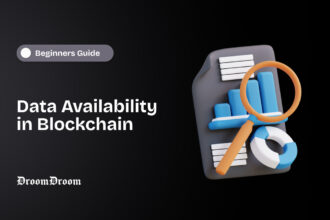Transactions on blockchain are fast, anonymous, secure, and seamless until you are interacting with a single blockchain network. The moment you start transacting and interacting across different blockchain networks, the congestion, scalability issues, security risks, and the torment of high gas fees begin.
Hyberbridge interoperability protocol is a technology that acts as a bridge between different blockchain networks, facilitating seamless, secure, and faster communication. It is an interoperability coprocessor that enables you to scale interoperability across various blockchains while maintaining the independence of each network.
This blog aims to dive into the core concept of the Hyperbridge interoperability protocol, how it works, and its benefits for crypto users. We will also explore how Hyperbridge is a more powerful and better alternative to traditional bridges on the blockchain.
What Is Hyperbridge Interoperability Protocol?
Imagine you have dollars and you want to buy something that’s priced in euros. Now you cannot directly buy any asset priced in euros with dollars. You will have to first convert dollars into euros and only then you can make the transaction.
Similarly, you have different blockchain networks and their currencies. You cannot buy an NFT priced in ETH with BTC because these blockchain networks act as different ecosystems. You can use the currency of a respective network only in that ecosystem. You will first have to convert your BTC into ETH and then buy the NFT.
Now, doing cross-blockchain transactions without any interoperability protocol is extremely difficult and often impossible. This is because:
- Each blockchain network has its own currency, rules and structure, and consensus mechanism.
- These networks act like isolated entities, as there is no ideal standard or protocol to communicate with each other.
- There is a high chance of hacking if you try to interact with a cross-blockchain without a secure intermediary.
This is where the Hyperbridge interoperability protocol comes in. It bridges the communication gap between different blockchain networks by enabling smooth, secure, and cost-effective data and asset sharing across blockchain networks.
The key features of the Hyperbridge interoperability protocol are:
- Hyper-scalability: ability to handle large, complex computations off-chain
- Security: employs cryptographic consensus and state proofs to secure communications
- Versatility: supports easy interaction and sharing across different blockchains
- Developer-friendly: offers on-chain and off-chain SDKs for easy integration
The protocol addresses the issue of fragmented blockchain by facilitating inter-network connectivity, which distinguishes it from other interoperability networks. It can be helpful on DeFi platforms where you can seamlessly access a wide range of financial services without increasing the gas fees. Moreover, along with enabling you to make fast and cost-effective international payments, your organizations can easily share and access data across multiple blockchain networks without compromising security.
How Does the Hyperbridge Interoperability Protocol Link Different Blockchain Networks?
The essence of the Hyperbridge interoperability protocol is its coprocessor, which offloads the complex computations off-chain to ease the burden on the main blockchain. This reduces the cost of incurring them, speeds up transactions, and enhances the performance and efficiency of the main blockchain networks.
Let’s imagine you want to take your friends to a party destination. While you have the means to commute (car), a GPS interface in your car can suggest the best possible route, guiding you step-by-step with real-time traffic insights. This makes your drive enjoyable and safe, all while ensuring that you reach the right destination.
Now the car is the main blockchain network and the GPS is the coprocessor that offloads complex calculations “off-chain” or outside the blockchain network. This reduces the load on the blockchain, making the transactions cheaper and faster. Another benefit of a coprocessor is improving the scalability of blockchains. It enables the blockchain to handle large transactions without compromising performance, efficiency, speed, and accuracy.
The coprocessor then verifies three key components of the blockchain network – state proofs, consensus, and state transitions.
- As each blockchain has its own rules, the coprocessor verifies if those rules are met or not.
- Then the coprocessor verifies if the information being exchanged on the blockchains is accurate or not via state proofs.
- Lastly, the coprocessor verifies if the changes (transactions) on the blockchain are authorized and according to the rules or not.
For example, on Polkadot, Hyperbridge uses the Beefy protocol to verify state transitions within parachains to enhance security and avoid risks.
How is Hyperbridge Different From Traditional Bridges?
Hyperbridge is a new approach to cross-chain interoperability as compared to other blockchain bridges. Here is how it is different from other interoperability bridges on blockchain:
Architectural Design
Hyperbridge is based on a coprocessor model where the coprocessor handles all the complex computations off-chain, easing the load on the blockchain. This in turn boosts the efficiency of the main blockchain and makes transactions cheaper and faster.
Traditional bridges often rely on on-chain computations, which become quite expensive and slow.
Security Mechanism
In the Hyperbridge protocol, the coprocessor verifies state proofs, consensus mechanisms, and state transitions to execute transactions or data sharing across blockchain networks. Plus, it also uses advanced cryptographic techniques, including ZK proofs and PLONK verifiers, to check the legitimacy of transactions. All these collectively enhance the security and privacy of the transactions.
Traditional bridges are often laced with vulnerabilities due to their centralized or semi-centralized model, where the assets or data are first stored on one chain and then transferred to another chain.
Decentralized & Permissionless
Unlike traditional bridges that require users to go through centralized exchanges or protocols, Hyperbridge is permissionless and completely decentralized. It means that you do not have to get anyone’s approval to use the protocol to interact across multiple blockchain networks.
On the other hand, conventional bridges push the users to centralized exchanges or protocols where they might have to face restrictions on asset transfer or disclose their identity to transact. All these hinder the user experience and put the privacy at risk.
Speed
Hyperbridge is reputed for enabling faster transactions thanks to its coprocessor and consensus proofs. By reducing the load from the main chain and verifying state transitions and state proofs, the protocol allows quick cross-chain interactions.
On the contrary, traditional bridges take several minutes to process the transactions due to their locking mechanism.
Developer-Friendly
You will love the Hyperbridge protocol as a developer, owning to its seamless API integration, which allows you to build Defi applications without worrying about complex coding requirements. With Hyperbridge and its modular architecture, it’s easier to build cross-chain applications using the sophisticated features of multiple chains.
Conventional bridges don’t offer interoperability features similar to Hyperbridge, making it difficult for developers to develop applications that could smoothly function across several blockchain networks.
What Role Does The Interoperable State Machine Protocol (ISMP) Play In Hyperbridge?
Interoperable State Machine Protocol plays a critical role in enabling developers to build interoperable applications on the blockchain. It is a lightweight and unopinionated messaging protocol that allows you to build applications that are cryptographically secure. By verifying state proofs and consensus mechanisms, the protocol ensures the security and privacy of the applications you build and deploy on the blockchain.
The best thing about ISMP is its minimal API surface that allows you to build cutting-edge applications without complex coding and high costs. Plus, its modular design enables you to rapidly integrate consensus mechanisms and build DeFi apps.
Another key feature of ISMP is its state trie, which expands like an infinite tree. The state updates are managed and updated across the tree structure for all connected blockchains. This prevents the system from recalculating the updates, improving the overall efficiency in state proof generation.
Hyperbridge interoperability protocol supports a wide range of consensus algorithms like GRANDPA, BEEFY, and Casper FFG, giving developers the flexibility to develop and deploy applications as they prefer.
Conclusion
Hyperbridge protocol enhances interoperability across multiple blockchain networks, bringing fragmented chains together as an ecosystem where users can seamlessly and securely transact and developers have the flexibility to build cross-chain applications. With its decentralized ISMP-powered coprocessor framework, the Hyperbridge provides a robust framework for diverse applications in DeFi, governance, and advanced financial products.




















